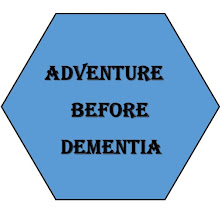We were up and out early this morning for a LONG bus ride over to Fjordland National Park, specifically to Milford Sound, which was dubbed the Eighth Wonder of the World by Rudyard Kipling.
By air, it's only about 50 miles between Queenstown and Milford Sound - by road, it’s about 200 miles. Fortunately, it is a beautiful drive and our driver was a font of information about the area, the people, the plants and the animals. First we headed south along Lake Wakatipu, at the foot of the Remarkable Mountains - this was an area of many sheep farms, including some on the "other" side of the lake, accessible only by boat.
Then we headed west through a river valley and along Lake Te Anau, and finally north over the mountains to Milford Sound. By the last part of the trip, the weather had turned wet, but the scenery still was striking - wide glacier-carved valleys ringed by towering mountains capped with snow. We went through steep gorges and between walls of solid rock and moss-covered trees.
This area is a cool temperate rainforest, jungle-dense and complete with vines, climbers, perching plants and ferns, including tree ferns. The predominant tree is the silver birch, which thrives in wet conditions.
This jumble of trees and roots is part of what remains from an avalanche earlier in the year. When the snow comes flying down the mountain, it strips everything in its path - and closes the road for long periods of time.
Fjordland National Park, at 3 million acres, is New Zealand's largest national park. Its steep and rugged coastline, dense forest and challenging climate results in a region that has almost no towns or roads. It is one of the wettest places in the world, averaging nearly 20 feet of rain and snow per year. With heavy rain, the rock walls stream with waterfalls and small rivers become raging torrents. With snow comes the risk of avalanches.
The Homer Tunnel is an engineering feat that makes it possible to get through the last mountain range to the Tasman Sea, on the West Coast of New Zealand. The tunnel is only about 3/4 mile in length, but it took quite a while to become reality. It was first proposed in 1889, work began in 1935, and it finally opened in 1954. There's no lighting inside, no lanes are marked and it's pretty narrow – just wide enough for one-way traffic.
Just past the tunnel, we stopped at The Chasm. In spite of the rain, we took the 15-minute walk through the forest to see a wonderful bit of natural erosion on the Cleddau River - a deep gorge with swirling currents resembling a giant toilet flushing. This must have been quite a surprise to early explorers canoeing down this steam.
In the parking lot, we spotted a Kea, New Zealand's largest parrot. This fellow was a bit damp, but he had plenty to say to the humans standing around gawking at him.
At road's end, we boarded our vessel - the Sinbad - and headed out into Milford Sound, bound for the Tasman Sea, 14 miles away. This huge fjord is lined with mountain peaks that rise sharply out of the water to heights of nearly 6000 feet. The water depth reaches nearly 2000 feet.
It rains a lot around here and we experienced a typical wet day. The good news was that rain brings waterfalls to life and we saw hundreds of waterfalls cascading down spectacular cliff faces.
Wildlife viewing was a bit limited by the weather, but we did see New Zealand fur seals and Fjordland crested penguins.
The weather improved a bit on the ride back and we were treated to a beautiful rainbow.














